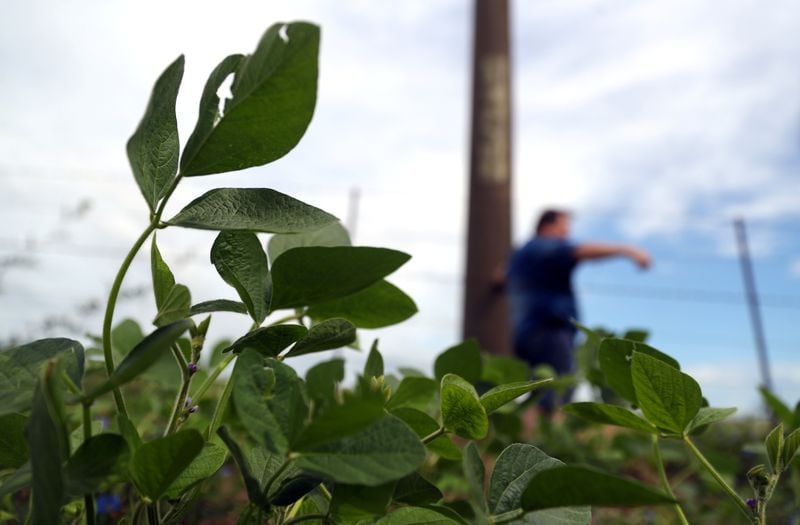
President Alberto Fernández's 18-minute speech was enough to make it clear that there is nothing too new to combat price escalation. The only concrete announcement was the creation of the Wheat Stabilization Fund, but then he described the full range of measures available to obtain any result: from the halt to the monetary issuance negotiated with the IMF to the threat of applying the obsolete supply law to punish producers who stand out in the form disproportionate.
The President showed himself as a boxer on the ropes who throws all the blows at the same time to get out of the siege. Yesterday he didn't talk about “war” but he did talk about “fight”. But it is a very unequal struggle, where the Government has clearly been running from behind and without having been right with a formula that will give it results, although it proved everything. Nothing indicates that you will now get very different results, that is to say bad.
February inflation set off all the alarms. In a month where the dollar behaved calmly and even lowered the exchange rate gap, the index was almost 4.7% and the food basket increased by no less than 9%. Russia's invasion of Ukraine had virtually no effect on that measurement, because it occurred at the end of the month. Therefore, March will come with much worse data. It is very likely that the food increase will be in double digits. There is no pocket that can withstand such remarks, which in the case of supermarkets, self-service and butcher shops are already carried out on a weekly basis.
The increase in withholding from 31% to 33% on soy products will contribute just over USD 400 million and will serve to subsidize the local price of flour. This seeks to put a stop to the sharp increases in basic products such as bread or noodles. The measure will provoke a confrontation with the countryside, which will surely return to protests and measures of force.

A report by the IERAL, from the Mediterranean Foundation, clearly warned the short-term view of this measure: “The increase in retentions, supposedly to benefit consumers, is a mistake based on a diagnosis that only looks at the “photo”, and does not take into account the dynamics. With Argentina having the potential to produce food and energy, in a scenario where chronic distortions in relative prices are avoided and even with more expensive food and energy, the inhabitants would have higher incomes, as is the case in Canada, Australia and the United States.”
The inflationary scenario means a “perfect storm” for the Argentine economy. Even before the war, the consultants' forecast was for a 55% increase, as a result of the need to raise tariffs after the virtual freeze in the last two years, fuel adjustments and the increase in the official dollar to avoid delays as happened during 2021. In addition, most food prices also came with delayed increases due to the application of Maximum Prices since the pandemic. The pressure cooker was uncovered at the start of 2022.
All in all, the “good news” is that the peak of inflation in March is likely to mark a maximum value from which we begin to see a gradual decline in the index. This is what happened just in March of last year, when it scored 4.7% and from there it fell but very gradually and with ups and downs.
Old acquaintance
Among the announcements being prepared and that will be displayed in the coming days are old acquaintances: extension of the list of Care Prices, freezing of a quantity of products from the basic food basket that will be negotiated with production companies and dialogue tables to reach an agreement on prices and wages. Of course, municipalities will also be involved to see that price lists are complied with and to avoid alleged abuses. Doing more of the same is difficult to obtain different results.

However, none of these measures failed in the past replace the benefits of a serious economic program that would restore the confidence of entrepreneurs and consumers. This is not an easy task in the context of a weakened government, which is facing a severe internal crisis. The decision of hard Kirchnerism to vote against the agreement with the Fund in Congress speaks for itself.
Paradoxically, the President used much of yesterday's speech on the settlement reached with the IMF, stating that it will help him to rebuild international reserves, remove the danger of a sharp devaluation and reduce monetary issuance. It was a clear shot by elevation to Vice President Cristina Kirchner, who publicly warned that the agency's proposed adjustment would only bring more poverty.
However, the program itself agreed with the IMF would have very modest results in combating inflation. Markets are wary that the curb in monetary issuance of 3.7% to 1% proposed for this year can actually be met. But it also moves away from the reduction of the deficit from 3% to 2.5%, which seemed like an easy goal for this year, given the higher costs that will be required by importing energy in the winter.
In such a context, the best scenario for the Government would be that inflation did not soar beyond the 55-60 per cent range projected for the year. If you are doing relatively well, the results could begin to be perceived only in the second semester.
KEEP READING:
Últimas Noticias
Debanhi Escobar: they secured the motel where she was found lifeless in a cistern

The oldest person in the world died at the age of 119

Macabre find in CDMX: they left a body bagged and tied in a taxi
The eagles of America will face Manchester City in a duel of legends. Here are the details

Why is it good to bring dogs out to know the world when they are puppies




